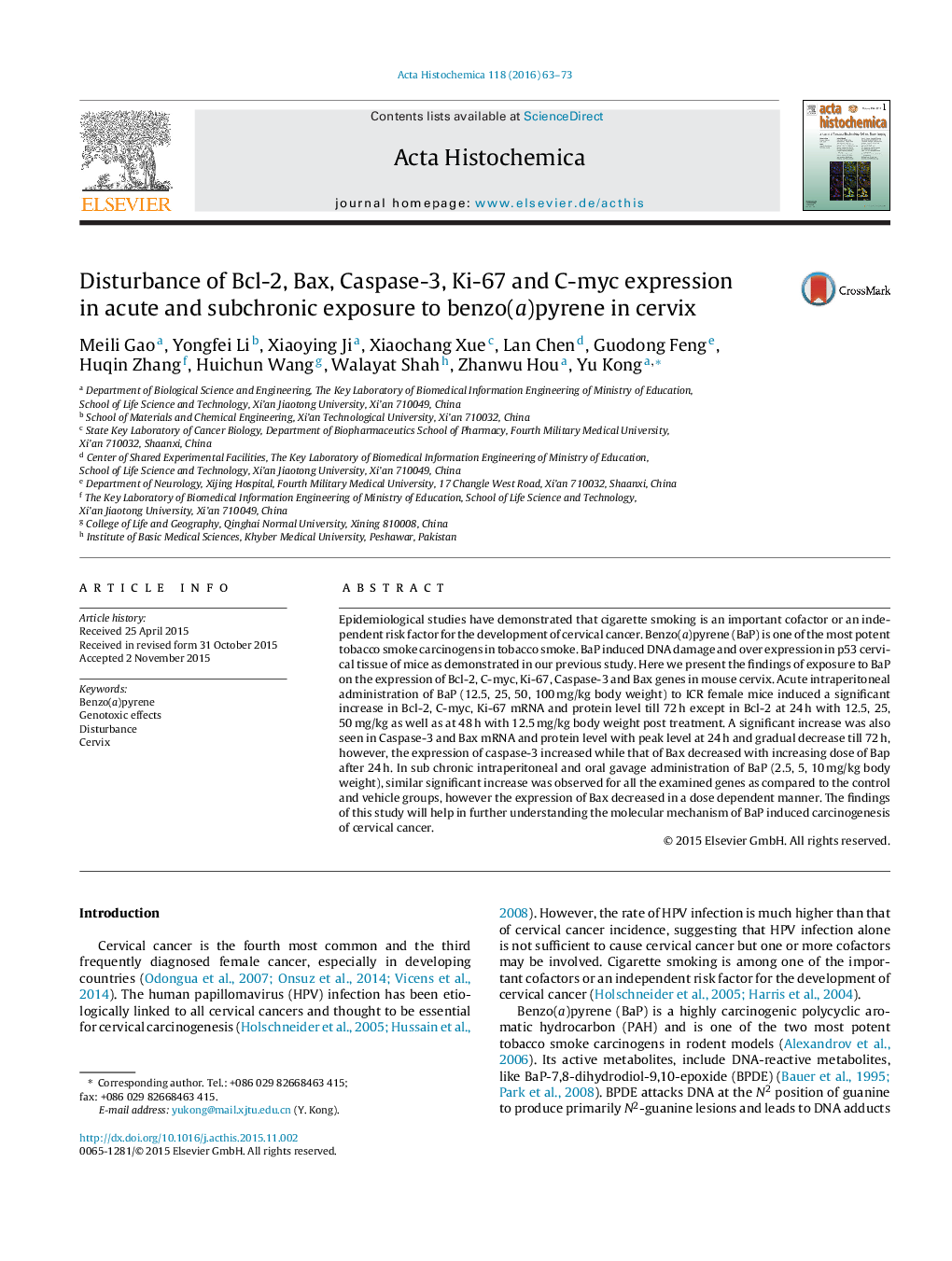| Article ID | Journal | Published Year | Pages | File Type |
|---|---|---|---|---|
| 1923369 | Acta Histochemica | 2016 | 11 Pages |
•Benzo(a)pyrene disturbed the expression of Bcl-2, C-myc, Ki-67, Caspase-3 and Bax genes in cervix.•The induction indicated a dose-dependent manner in acute or subchronic treatments.
Epidemiological studies have demonstrated that cigarette smoking is an important cofactor or an independent risk factor for the development of cervical cancer. Benzo(a)pyrene (BaP) is one of the most potent tobacco smoke carcinogens in tobacco smoke. BaP induced DNA damage and over expression in p53 cervical tissue of mice as demonstrated in our previous study. Here we present the findings of exposure to BaP on the expression of Bcl-2, C-myc, Ki-67, Caspase-3 and Bax genes in mouse cervix. Acute intraperitoneal administration of BaP (12.5, 25, 50, 100 mg/kg body weight) to ICR female mice induced a significant increase in Bcl-2, C-myc, Ki-67 mRNA and protein level till 72 h except in Bcl-2 at 24 h with 12.5, 25, 50 mg/kg as well as at 48 h with 12.5 mg/kg body weight post treatment. A significant increase was also seen in Caspase-3 and Bax mRNA and protein level with peak level at 24 h and gradual decrease till 72 h, however, the expression of caspase-3 increased while that of Bax decreased with increasing dose of Bap after 24 h. In sub chronic intraperitoneal and oral gavage administration of BaP (2.5, 5, 10 mg/kg body weight), similar significant increase was observed for all the examined genes as compared to the control and vehicle groups, however the expression of Bax decreased in a dose dependent manner. The findings of this study will help in further understanding the molecular mechanism of BaP induced carcinogenesis of cervical cancer.
Graphical abstractFigure optionsDownload full-size imageDownload as PowerPoint slide
